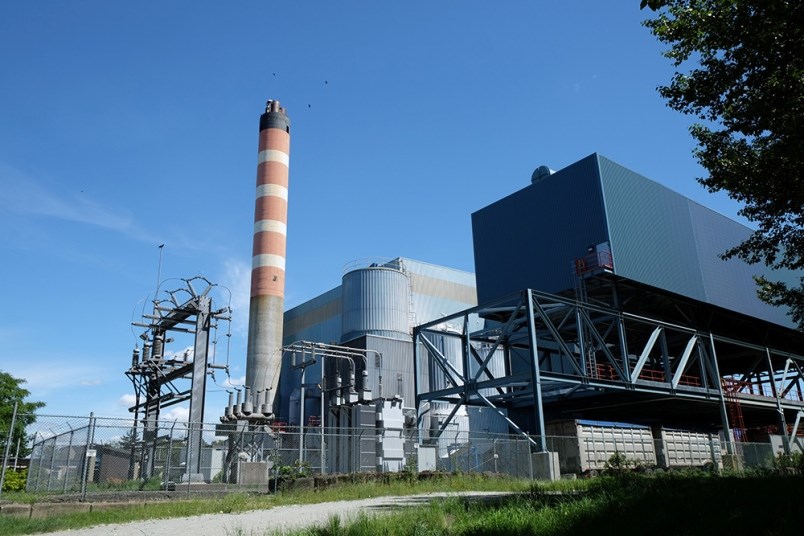Metro Vancouver residents reduced the amount of garbage they produced every year by about 172 kilograms per person between 2010 and 2020 — equivalent to 476,000 tonnes or the weight of about four CN Towers, a new report has found.
Of the garbage that did get thrown out, a fifth ended up in an incinerator in Burnaby, where since 1988, it has been transformed into energy that now powers about 16,000 homes, and produces more than $5.8 million annually in energy and recycled metal sales. That's the success story Metro Vancouver and most others agree on.
But according to a recent analysis from the non-profit Zero Waste British Columbia, the costs to incinerate all that garbage are projected to spike in the coming years.
Over the course of a decade, the study found the cost to dispose waste in a landfill grew four per cent, while its waste-to-energy operations climbed 22 per cent. Future maintenance on the incinerator is expected to raise costs even higher.
By 2027, operating costs at the waste-to-energy facility are expected to shoot up 74 per cent, the non-profit report says. The increase is largely due to “significant” capital costs expected to rise over the coming years “as the incinerator is rebuilt piece by piece and air quality requirements are increased,” notes a summary of the report.
Call to cut waste from the source
The incinerator has increased plastic, metal and glass emissions by 101 per cent between 2010 and 2002, at a time landfill emissions dropped 72 per cent. That success story is driven by gas capture programs and campaigns to educate the public on disposing organic waste into green bins instead of the garbage, according to the outside analysis.
“The Burnaby incinerator has been one of the top 25 industrial point sources of GHGs for the past 10 years,” read a summary presented to Metro Vancouver’s zero waste committee Thursday. “For an energy source, waste to energy is the most GHG intense form of energy.”
Sue Maxwell, chair of Zero Waste BC and a former Whistler city councillor, told the committee that many cities across the U.S. — including all of California — are in the process of shutting down incinerators due to financial, health and environmental costs.
Consider this, said Maxwell: over 10 years, education programs helped drop the amount of waste across the region at a scale equivalent to eliminating the need for an entire incinerator — and it did it at a fraction of the cost.
“If you cut your waste in half, your landfill lifespan doubles,” said Maxwell. “What if we scaled that up?”
Pause plan for garbage to power cities, says group
Amid the rising costs, Metro Vancouver has a plan to channel the electricity generated at the Burnaby incinerator to help power a district energy system serving South Vancouver’s River District first, and Burnaby’s Metrotown and Edmonds neighbourhoods later.
The $207-million plan is set to displace heating from natural gas boilers. And while the first $84-million phase — which includes construction of a six-kilometre hot water pipeline from Burnaby to Vancouver — is well underway, the second phase has not yet been approved.
“District energy is a great system. But it really needs to be based on only renewable and clean energy and which waste to energy is not,” Maxwell told the committee.
“So recommendations are: put a pause on the district energy that is coming from wasting energy, close the waste-to-energy facility and pursue zero waste instead.”
Committee members 'getting mixed messages'
Burnaby Coun. Pietro Calendino pushed back against the findings, saying the plan to hook up the incinerator to a district energy system would “heat some 50,000 homes without using fossil fuels.”
“I'm getting mixed messages here,” said Calendino.
Coun. Steve Ferguson of Langley Township said turning away from the incinerator district energy plans raises questions over what happens when Metro runs out of space in landfills.
“Which is less bad?” Ferguson said. “Is our landfills less bad or, you know, burning a certain amount in the waste incinerator?”
Paul Henderson, general manager of solid waste services, said Maxwell’s work was meticulous, but that staff was planning on coming up with its own cost estimates for the incinerator. Henderson also said the Vancouver landfill has reached its upper limit.
“And so under current circumstances, even if that was a choice, you wouldn't be able to replace the waste energy facility with the Vancouver landfill,” he said.




